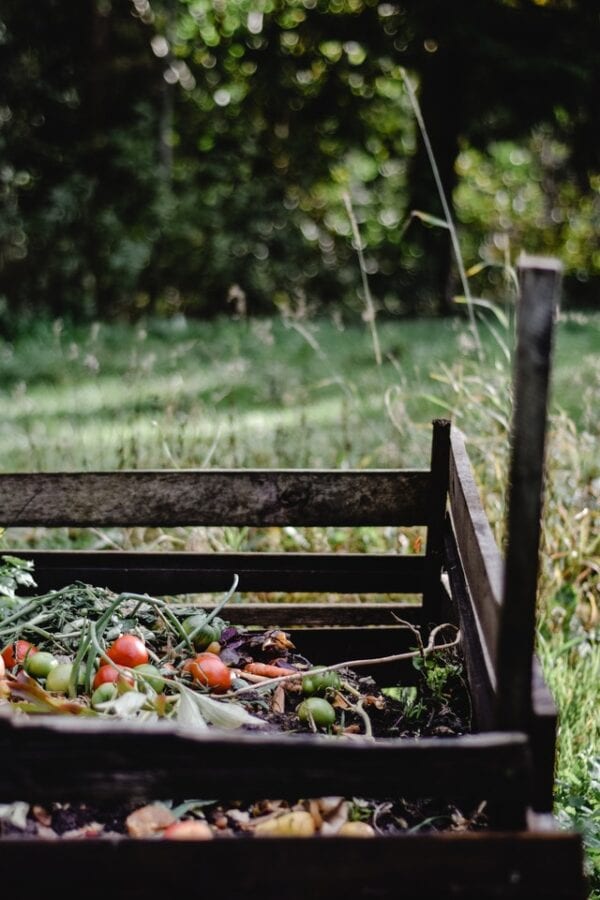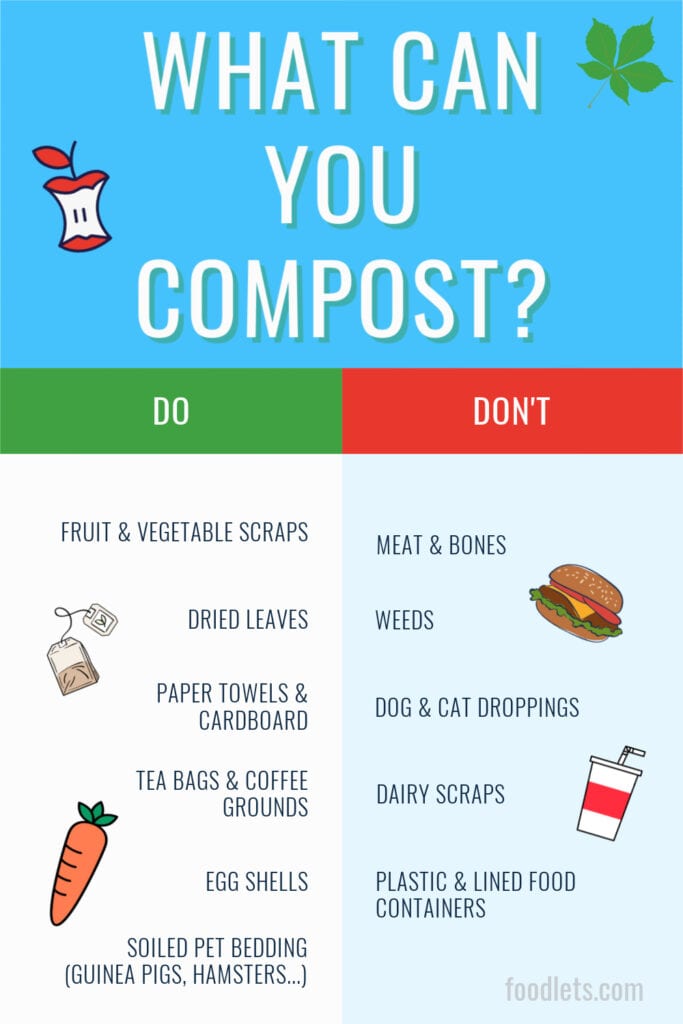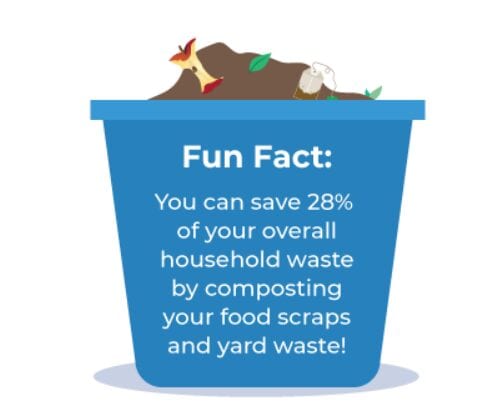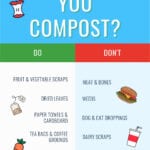Learning how to compost changed my family’s life–and our garden too! Did you know that food is the single largest contributor to landfills in America?
Composting can fix that.
And your garden (or shrubs) will get a rich and hearty fertilizer, for free!
Here’s how you can get started.

Green + Brown = Gold
There are many wonderful gardening sites with detailed information about composting but to getting started is surprisingly simple. To produce fertilizer, your compost pile must include two kinds of waste: green and brown. The green category is nitrogen-rich and includes things like grass clippings (literally green) and kitchen scraps, while the brown supplies carbon. (Think crispy dead leaves.) That chemical exchange is the magic! Nitrogen + carbon = excellent fertilizer.
- Layers are important: Many gardeners suggest a ratio of 2 parts brown to 1 part green.
- Periodically add a little soil or old compost to the pile, to encourage new organisms to grow.
- Consider using a thermometer to check on the temperature, which should be nice and toasty to break down your compost. (Thermophilic bacteria prefer a temperature between 113oF and 160oF)
- Rotate your compost pile to add air using a pitchfork. Or add crumpled up cardboard to your layers to add built-in pockets of air.
What Can You Compost?
MOST things! Again, the trick is to layer “green” with “brown elements like these–then mix or rotate periodically:
GREEN COMPOST (1 part)
- egg shells
- coffee grounds
- any fruit or vegetable peelings and cores (banana peels, carrot peels, apple cores, melon rinds, etc.)
- used tea bags
- grass clippings
- pet and people hair
- waste from pets like guinea pigs, rabbits and even chickens — along with the soiled bedding (DO NOT include waste from dogs or cats because they may contain bacteria harmful to people.)
BROWN COMPOST (2 parts)
- paper towels
- cardboard (in small quantities, like an egg carton)
- fallen leaves
- brown packing paper
- paper bags
- paper food/takeout containers
DO NOT COMPOST
Compost will break down nicely if you add the right things, but do skip these:
- No meat or bones (find out more about why here)
- No dairy products
- No oils
- No dog or cat waste
- Wax or plastic-lined food containers
- No weeds or diseased plants (they’ll multiply when you reuse the compost in your garden)
- No plastics, glass or metals
Choosing a Compost Container
You could certainly just make a pile in a sunny corner of your yard. Or build a square container out of wood or pallets. And of course buying a ready-made unit is also a great option.
Either way, don’t get too hung up on which container you need. Just pick one that’s big enough for your needs (consider the kitchen and yard), then get started. Here are a few of my favorite outdoor containers plus those with excellent reviews. Most families will need more than one unit to keep up with the amount of kitchen and yard waste you generate. The idea is to fill one, then rotate to a second, or third. By the time the second or third container is full you should be able to empty the first one and use the fertilizer.
Units like this one make it easy to secure your compost from pests and also rotate easily. We have one of these.

Some gardeners swear by open composting systems like this one, which is also the least expensive of any in our list. It’s particularly good if you have a lot of yard waste, like leaves.

Another closed system, this one works to break down the compost quickly, then releases the good stuff through the door at the bottom of the bin.

My Favorite Kitchen Compost Containers
You could certainly just re-use any large yogurt container, or bowl for your kitchen scraps but we generate so much of it that I like a counter-top container that we can empty each evening. (It’s one of the kids’ chores.) These are the containers I like best:
This straight up stainless steel container gets the job done with a sleek look.

I have two of these ceramic containers in different colors. One for the compost, one for the chickens (where all the meat scraps and oily leftovers go).

More modern kitchens might fit this box made out of acacia wood with a stainless steel insert. Gorgeous!




Leave a Reply